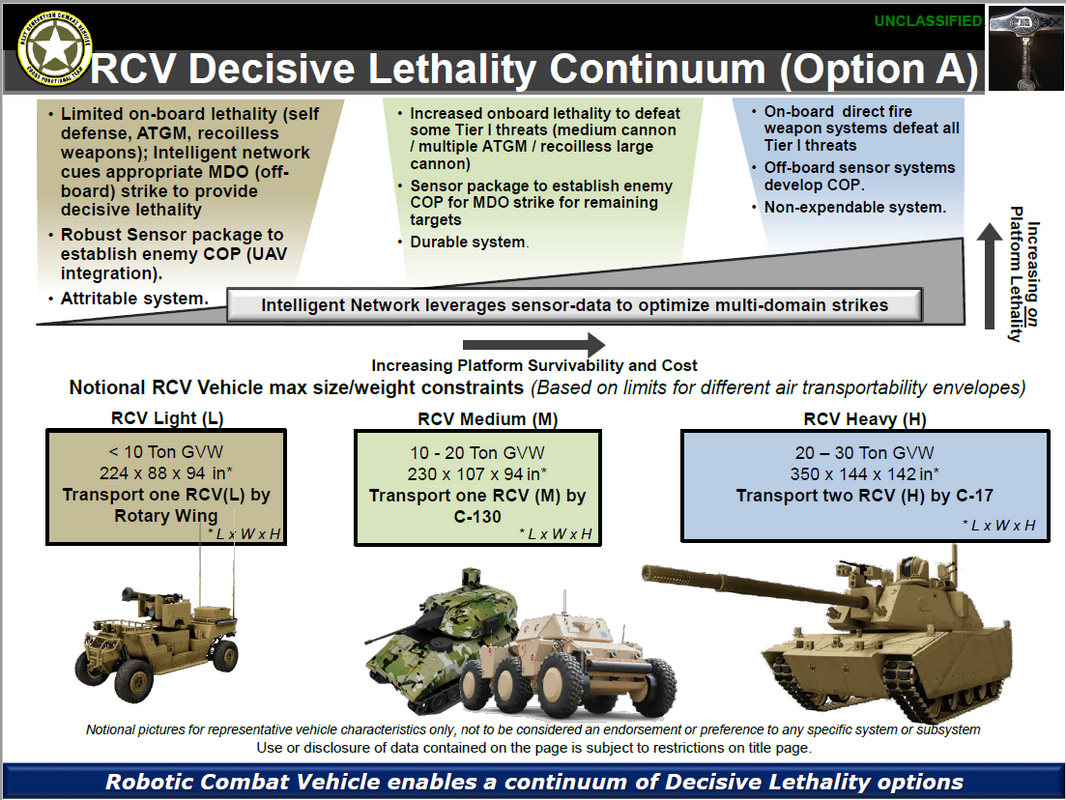The U.S. Army is being rebuilt to more appropriately reflect our new multipolar world. The Army 2030 program seeks to shift emphasis from brigades to divisions as the mainstay of America's war-fighting capability. These divisions -- which will be built to five standard scaffolds and fortified with novel technologies -- are to fulfil specialised roles within the larger corps formations and depend on corps-level support to properly prosecute their objectives. This shift in emphasis from formations of 5,000 men to formations of 50,000 men is, clearly, a substantial shift in the wars the U.S. sees itself fighting in the years ahead.
The five scaffolds are as follows:
(1) Armoured Division (Reinforced). The 1st Cavalry, 1st Armoured, and 34th Infantry (National Guard) divisions will fill the role of fully-armoured penetration divisions that will concentrate armour in key areas to crack the enemy's line and drive into its rear. As such, these formations hold twice as many sappers (combat engineers) as their lighter Armoured Division brethren. Sappers allow the division to quickly navigate natural or manmade obstacles and uphold the momentum of the division's thrust. A noticeable addition to the three combined arms brigades that form the nucleus of Reinforced Divisions are the Robot Combat Vehicle (RCV) platoons. Initially, these platoons will be used as technology landing sites to test novel doctrine and operating procedures. Eventually, robotic vehicles weighing perhaps 30-tonnes are intended to act as wingmen for armoured vehicle crews. Consider the casualties that will be avoided by allowing unmanned systems to trigger ambushes, minefields, and fix enemy positions (soaking up fires) while soldiers manoeuvre with good awareness of the battle space.

(2) Armoured Division. The 1st Infantry, 3rd Infantry, 4th Infantry, and 36th Infantry (National Guard). Similar in some ways to the Reinforced Divisions, Armoured Divisions trade one of the armoured combined arms brigades for a Stryker brigade. Wheeled armoured vehicles are both more lightly armoured and less mobile off-road than their tracked IFV counterparts, but lighten the logistical load on the parent formation. These divisions are not intended to be thrust through enemy lines as Reinforced divisions. Instead, they poke and prod enemy lines to force the adversary into undesirable engagements, thereby revealing their position and constitution. Once a weakness is discovered, Corps-level support assets (e.g., HIMARS) can soften the Reds and Reinforced Divisions can tackle through.
(3) Light Divisions. 10th Mountain, 25th Infantry, 11th Airborne, {28th Infantry, 35th Infantry, 38th Infantry, 40th Infantry, and 42nd Infantry}{NG}. Two types of Light Divisions will form the bulk of the U.S. Army. The first flavour will be motorised and lorried into battle atop the new Infantry Squad Vehicle (ISV). The latter will be minimally motorised and instead optimised for air assault (helicopter) deployments.
(4) Airborne (Joint Forcible Entry). The 82nd Airborne Division is a strategic asset for the United States. It'll drop a brigade of parachute infantry on your head in 48 hours. Quite incredible. You should expect to see the Infantry Visual Augmentation System headsets in this formation first.
(5) Air Assault Division (Joint Forcible Entry). Despite its name, the fabled 101st Airborne Division ("The Screaming Eagles") is America's dedicated air assault division. During Desert Storm, the division heli-lifted infantry 250km behind Sadaam's front to cut lines of communication for Iraqi forces in Kuwait from Baghdad. While not officially disclosed, it's widely believed the 101st will be the first recipients of the Army's new Mobile Protected Firepower 'light tank'.
Discussion
It's no secret that the PLA is the expected target of these reforms. The People's Liberation Army Ground Force is divided into thirteen corps-sized commands, which the Chinese call, "Group Armies" (not to be confused with the much larger Army Groups of Western nations). Today, the U.S. maintains three active army Corps; I Corps, III Corps, and XVIII Corps. While V Corps headquarters has been reactivated, it is currently only a cadre formation. Additionally, I Army (stationed in Korea) is a corps-sized formation composed of First Army Division East and First Army Division West.
Clearly, the U.S. has no intention of concentrating strength on the Eurasian Continent for a mano-e-mano confrontation with the PLAGF. That would be stupid. Instead, the history of Britain's foreign policy for their own (smaller) continent is a better metaphor. From the Anglo-Spanish war of the early 17th Century to the Second World War, Britain upheld its security by judiciously expending its strength in support of a continental ally. Consider the actions of the Iron Duke of Wellington, Arthur Wellesley and his 30,000 Royal Marines. Tying down Napoleon's generals fighting a pesky campaign on the Iberian Peninsula instead of joining Napoleon in the real war that was raging elsewhere.
As the world fractionates into multiple power centres (China, India, potentially a future European bloc if European-minded men and women continue the push for "strategic autonomy") then the world may look a great deal more like the 17th-20th Centuries. The West's push for decarbonisation has compelled other nations to turn to Russia for their energy imports (importantly and gravely, India), so with full respect to the uncertainty of the situation, it appears the Russians may hold onto their own slice up north for the time being. Nevertheless, current foreign policy has produced an unholy alliance of necessity between Beijing and Moscow with dramatic implications for the balance of power on the Continent. Nevertheless, while the U.S. Army is substantially compacted compared to their Chinese counterparts, the conglomeration of fighting power into divisions and corps speaks to a future where the U.S. Army may find itself embroiled in Continental wars, in support of one giant or another, as the decades roll on. Hopefully such a scenario -- a repeat of the utter nightmare that spanned those previous centuries -- is not in the cards for us. But if it is, with any luck the ocean going nations can lend their collective weight to putting down these conflicts more quickly and decisively than otherwise.